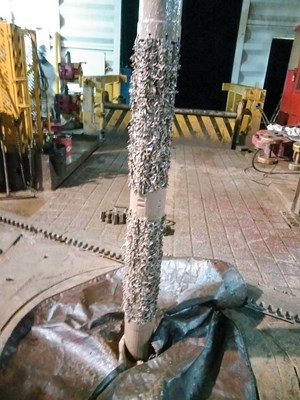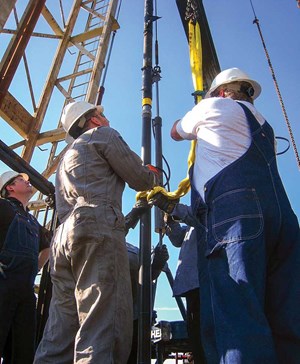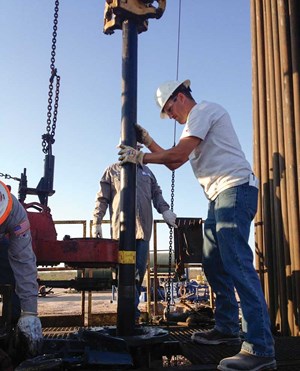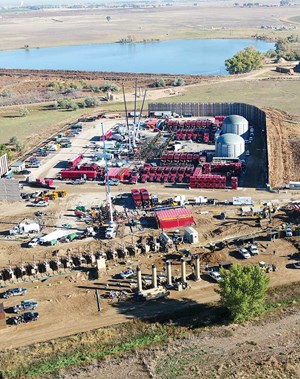Restoring profitability of mature, unconventional wells
Frac design has evolved significantly over the past decade, with newer wells showing increased productivity. More proppant and fluid, tighter cluster spacing, and longer lateral lengths are some of the main drivers that enhance production. This evolution of frac design has led to the conclusion that many older wells may have been understimulated.
Recovering the reserves left behind in under-stimulated wells requires refracturing that utilizes more modern frac designs. Operators have attempted many techniques to re-stimulate older wells. Some have used particulate diverters to isolate and divert flow, while others have involved coiled tubing and packers. While the primary driver for any refracturing work is to boost base production and unlock stranded reserves with low capital investment, success depends on isolating existing perforations.
CHALLENGE
It’s estimated that drilling and completing a new well can range between $5 million to $ 10 million per well. In today’s budget-constrained climate, full-lateral refracturing unlocks unrecovered reserves at a lower cost than drilling and fracing new wells.
Although repeating well-known, but relatively expensive operations produces the desired results, the current economic environment requires new cost-effective technologies to accomplish the same objective. This is the ongoing challenge facing the OFS industry in its quest to support sustainable and cost-effective drilling and completion technologies.
NEW CORPORATE ENTITY
To address the challenge and increase recovery in mature fields, Coretrax, Mohawk Energy and Churchill Drilling Tools unified in March to deliver an all-encompassing offering for practically every phase of the well lifecycle from drilling, through to wellbore clean-up and abandonment. With a fully integrated service-offering, the company now has a portfolio of over 50 technologies delivered through three innovation platforms and plans to launch several new technologies this year. The company plans to reinvest approximately 15% of revenues into R&D each year. This effort has led to the creation of a new product line.
TECHNOLOGY LAUNCH
ReLine MNS expandable technology is a key innovation that provides a single-trip solution with no shoe milling to clad and seal various wellbore integrity concerns, with minimal loss of inner diameter (ID), while providing high burst and collapse ratings, Fig. 1. The cased hole system is designed for deployment on jointed pipe and can cover long or short intervals, from 30 ft to 7,000 ft. It can be configured to expand and seal across various ID restrictions in the wellbore, such as nipples or frac sleeves.
Cleanout is critical. A comprehensive study of well candidate history, including recent interventions and chemical treatments, should be seriously considered while assessing the amount of preparation and clean-out needed, Fig. 2. This is crucial for well integrity, as casing, tubing or downhole completion equipment may fail or deteriorate over the life of the well.

However, applying ReLine MNS enables an operator to clad and seal the troubled area with minimal loss of tubular ID. The system is deployed with higher-performing materials and a unique frac sealing system for applications requiring isolation from fracturing. This enables the system to handle high treating pressures, as well as the induced loads from high-temperature cool downs.
However, for optimal refracing, the efficiency and effectiveness of the wellbore clean-up phase can make a significant difference to the success of the recompletion. Well preparation and lateral clean-out are, therefore, the most vital components to ensure that the expandable liner can be run to the intended depth and expand successfully. Thus, mature wellbores can be re-completed successfully with this technology, allowing refracturing with modern frac designs, as documented by the following case studies.
CASE STUDY 1
ReLine MNS was deployed in an older, southeastern New Mexico well, which was producing from the Bone Spring formation after a vintage frac completion. The produced volumes from the well were lower than new wells in the same acreage, and the forecasted, estimated ultimate recovery (EUR) values, using the original production trends, were not economic. Additionally, the level of depletion around the wellbore was presumed to be small. As the wellhead was rated to 10,000 psi, a wellhead isolation tool was not needed to test the casing to 6,200 psi, which was 80% of the burst rating and the expected pressure during the frac treatment.

Unlike other expandable systems, the running tool configuration allows the liner to be expanded in multiple load conditions. Importantly, the expandable liner can be left at a neutral position before anchoring the top seal and exiting the liners with the inner string. This neutral load condition is critical for reliability in severe fracturing downhole environments. In preparation, artificial lift equipment was pulled from the well, and a retrievable bridge plug was set at the planned depth of the top of the expanded liner, to test the integrity of the original 5½-in. casing. Multiple clean-out trips were needed to clean the lateral wellbore section. To ensure that the liner could be run to the intended depth and expanded, a drift was performed. The liner was then run-in-hole on an inner string without issues, Fig. 3.
The expansion cone was activated hydraulically to expand the bottom anchor seals. This secured the liner to the original casing. The rest of the liner was then expanded mechanically, using overpull. At the last joint, weight was slacked off to put the expanded liner into neutral, thereby relieving all the tension in the liner joints. The top anchor seals were then expanded hydraulically to anchor the top of the liner to the original casing.
To test the full well integrity after the liner was installed, a bridge plug was run and set at the end of the expanded liner. A pressure test to 6,200 psi was obtained. Subsequently, the well was hydraulically fractured, using a modern frac design with 22 stages over 3,300 ft of the lateral. There were no problems with placing the sand and no isolation-related issues during the treatment. The well was cleaned out, using a coiled tubing unit.
Initial production after refracturing was double the original completion’s initial production. The forecasted EUR almost tripled, and the rate of return was over 100%. Amongst other expandable technologies trialed on this project, the ReLine MNS had the lowest operational cost of the four systems tested by the operator, with minimal non-productive time. With the unique ability to leave the expanded liner in neutral while maintaining the speed of expanding the liner using overpull, the operator stated that this would be the system of choice for future full-lateral refracturing.
CASE STUDY 2
Mechanical isolation, using expandable liner technology, is a more reliable and effective method for refracturing wells than cementing casing to re-line the previous producing interval. Notably, expandable liner technology demonstrates the potential for consistent repeatability in terms of mechanical isolation and operational costs.
This was clearly shown in a recent project in the greater Wattenberg field of the Denver-Julesburg (DJ) basin, which has 1,400 producing wells, 500 of which are horizontal Niobrara and Codell producers. Eighteen horizontal pads have been completed since 2017, Fig. 4.
Coretrax was contracted in 2018 by independent energy company, Crestone Peak Resources, to ascertain if it was possible to replicate the performance of vertical refracs in a horizontal well. This procedure would drastically increase the life of the field by optimizing wells that were underperforming, due to small, old, inferior completions and/or mechanical issues.
While the application and operational aspects of the project were similar to the case study above, here, the Reline MNS was deployed in a smaller wellbore with 4½-in. casing, therefore necessitating limited availability of equipment for this size. Several methods were considered, including:
- CT-conveyed straddle packer refrac
- UFJ casing cemented inside parent casing with plug-and-perf
- High-volume, high-rate “pump-and-pray” refrac with diversion.
As production from this type of well is depleted—only 3 bbl were produced per day—an expandable liner with plug-and-perf was selected as the most suitable method for a slickwater frac. Following three drift runs to recover debris, a 7,253-ft liner was expanded across the length of the wellbore, with a new 3.321-in. ID. This gave the largest ID for restimulation, to allow 7.8 MMlbs of proppant to be placed at high pump rates. System deployment is simple and straightforward:
- Make up the tool, expandable casing, workstring and RIH
- Initiate hydraulic expansion to set the lower seals
- Expand casing by pulling the workstring at approx. 1,000 ft\min
- Set upper seal by applying hydraulic pressure
- Pull out of hole.
This resulted in a “like-new” wellbore in the cased-hole environment. Mechanical isolation then restored pressure integrity, with minimal wellbore ID loss for the purpose of refracturing. While initial results were promising—oil production was increased from 3 bpd to 200 bpd, and gas production was more than doubled—it was not as successful as historical vertical refracs. Economically, an application like this is expensive, especially on single-well operations. Potentially, the real value achieved in a project of this kind is by combining increased production in the refrac well with higher production in the child well, as a result of frac protection.
Last year, Coretrax completed further activity with the Colorado-based producer to refrac another infill pad (two parent wells and 11 child wells). By refracing multiple wells simultaneously, the operator sought to restimulate the existing pads while providing increased reservoir pressure, to assure production from new infill producers. Initial results show increased production from all wells on the pad.
Crestone has set a total of five long casing patches, ranging from 2,500 ft to 7,200 ft, on wells initially completed in both sliding sleeve and plug-and-perf. There were no operational issues while setting patches or pumping the associated refracs.
PATH FORWARD
Given current industry challenges with the volatile oil price and impact of COVID-19 on operations, it’s important for the OFS sector to support the industry with a continuous focus on reducing costs, improving efficiency, and strengthening sustainability, from drilling to decommissioning.

- From injection to insight: Tracing efficiency in surfactant huff and puff (November 2025)
- Maximizing production with smarter lift solutions (November 2025)
- Production technology: How a minor instrument upgrade led to major oil separator savings (November 2025)
- Engineered components are the difference between survival and failure in HPHT subsea systems (November 2025)
- Mature Asset Rejuvenation by Surveillance (MARS): Maximizing value from aging wells (October 2025)
- What's new in production: Be a SWIFTie! (October 2025)
- Subsea technology- Corrosion monitoring: From failure to success (February 2024)
- Applying ultra-deep LWD resistivity technology successfully in a SAGD operation (May 2019)
- Adoption of wireless intelligent completions advances (May 2019)
- Majors double down as takeaway crunch eases (April 2019)
- What’s new in well logging and formation evaluation (April 2019)
- Qualification of a 20,000-psi subsea BOP: A collaborative approach (February 2019)




